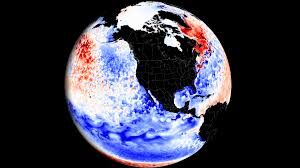Global weather models have begun revealing early predictions for the upcoming Winter 2025–26 season, with La Niña expected to play a decisive role in shaping snowfall patterns across the United States, Canada, and Europe.
According to long-range forecasts from leading climate models, the return of La Niña — marked by cooler Pacific Ocean temperatures — could result in heavier snowfall across northern parts of North America while leaving southern regions relatively dry.
In the United States, the ECMWF and other global models indicate above-normal snowfall for the Pacific Northwest, northern Rockies, Great Lakes, and parts of the Midwest. Meanwhile, the southern and eastern states are likely to experience below-average snow due to a weakened subtropical jet stream.
For Canada, meteorologists expect widespread snow accumulation, particularly across the Prairies, Ontario, and southern Quebec, driven by colder Arctic air intrusions.
In Europe, the pattern is set to be very different. Forecasts suggest below-average snowfall across most of central and western Europe, with normal to slightly higher totals over Scandinavia and the Alps. Mild westerly winds and a stronger Atlantic influence could limit snow coverage in low-lying areas.
Experts warn that these predictions could shift as the season approaches, depending on the strength and persistence of La Niña. “While La Niña typically brings colder conditions to the north and warmer weather to the south, local factors such as jet stream behavior can still lead to significant regional variations,” meteorologists noted.
The 2025–26 winter outlook highlights how global oceanic patterns continue to influence weather extremes, from severe snowstorms in the U.S. to warmer, wetter winters in parts of Europe.















